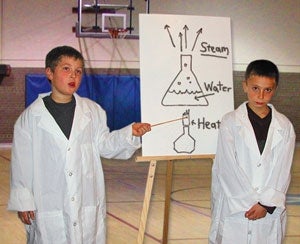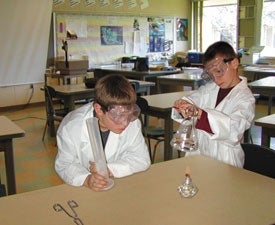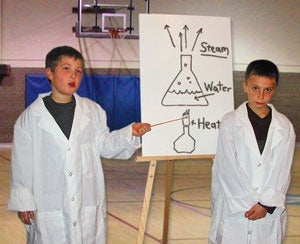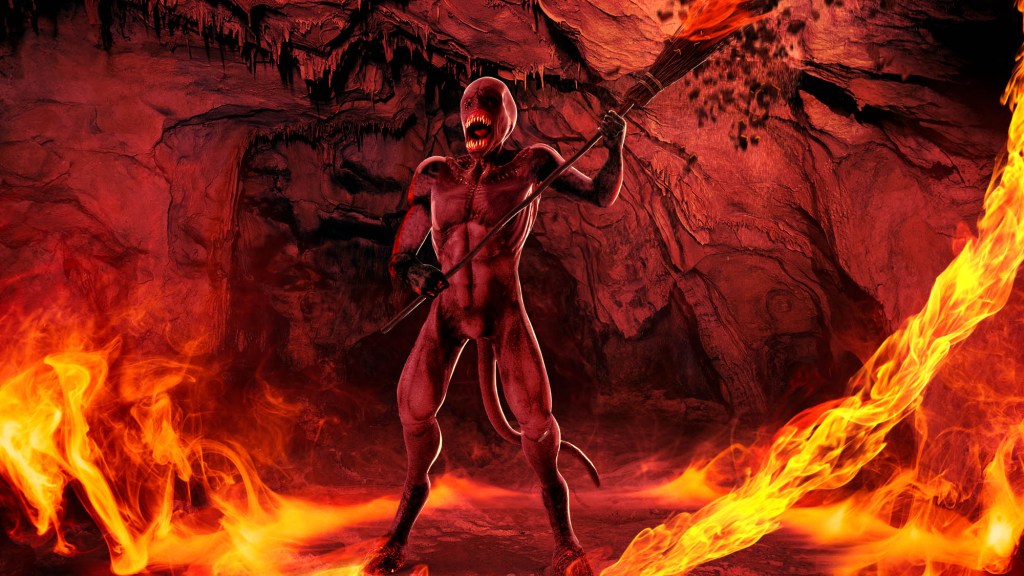GRESHAM, OR—In a breakthrough that has electrified the world’s 10-and-under scientific community, Mrs. Wagner’s third-grade class successfully vaporized water under controlled classroom conditions Monday.

“Um, the coolest thing was when we got to light the fire that made the water disappear,” said Jake Squirek, 9, a member of the Gresham Elementary School experimental-research team. “Then it boiled, then it turned into steam, which is the gas form of water.”
“Clouds are like steam, only not hot,” said fellow scientist Pam McKee, 8. “Water is called H20 in science.”
The experiment began with researcher Brittany Chase, 8, transferring approximately 50cL of water from the hallway drinking fountain into an Erlenmeyer flask. The water was then poured into a test tube placed on a stand over a Bunsen burner.
Despite offers from numerous members of the third-grade team, the burner was lit by Mrs. Wagner. Within two minutes, the contents of the flask began to boil, and shortly thereafter, the water vaporized and turned to steam.
According to Mrs. Wagner, the experiment was designed to illustrate the principles of evaporation and the three states of matter.
“The students had already conducted an experiment in which an ice cube was placed in a dish and melted over the course of two hours, demonstrating the change from solid to liquid,” Mrs. Wagner said. “They did so well with that, I wanted to reward them with something more challenging.”
Monday’s successful vaporization brought to an end a string of failures and setbacks for the young scientists. In September, an attempt to get a hamster to run through a maze to reach a plate of honey-roasted peanuts was scrapped when the animal escaped and disappeared under the classroom radiator. Two weeks later, a demonstration of the sense of taste was abandoned when a roll of Life Savers that had been part of the exercise was inadvertently eaten. And last Wednesday, Mrs. Wagner said, a static-electricity experiment resulted in “a lot of popped balloons and hurt feelings.”

Amanda Reynolds, 8, was among those who feared that the vaporization would meet a similar fate.
“We didn’t think anything would happen this time,” Reynolds said. “We didn’t have any luck before, so we figured this time would be the same. But then it started to steam, and we were all excited. I didn’t know what to expect. Then I got scared that it would explode and we would all get killed.”
“That didn’t happen,” Reynolds added.
The breakthrough experiment has generated considerable excitement among third-grade scientists across the U.S.
“Do you know what this means?” Monroe, MI, third-grader Shawn Bendix said. “If we can vaporize water, we probably can vaporize other liquids, too. You just have to heat it! You just have to heat it!”
Bendix then ran off to try to vaporize a quart of Strawberry Quik.
Members of the grown-up science community had high praise for the Gresham Elementary School team, as well.
“These bright youngsters are the future of science,” said John Diekman, Ph.D., chairman of the Scripps Research Institute in La Jolla, CA. “They will be the ones dissecting frogs, growing bean plants in milk cartons, and dipping litmus paper into acids and bases well into this century.”
Flush with success, the members of Mrs. Wagner’s team are already debating what their next experiment should be.
“We should make firecrackers,” Tommy Mautz, 9, told fellow scientist Dana Lardner. “If we can’t do that, maybe we should put a rat in the snake cage so we can see the snake eat it whole. That would be so cool.”







